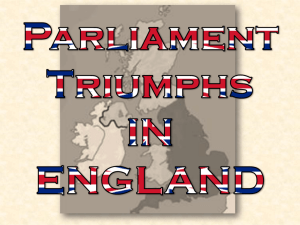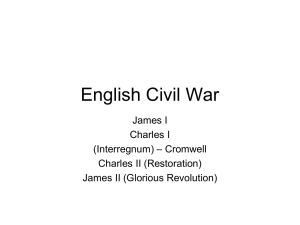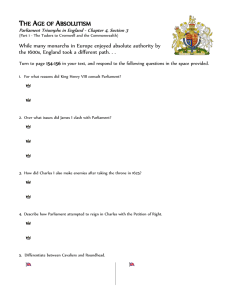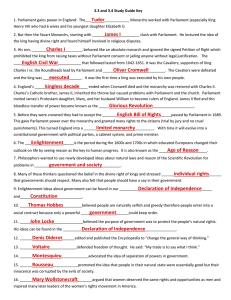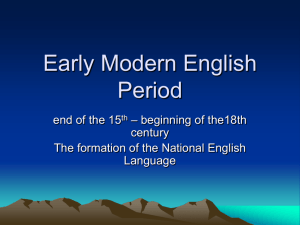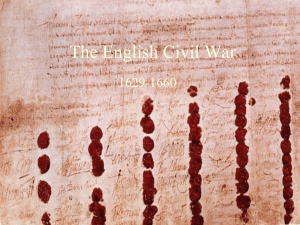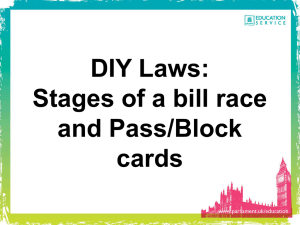CHAPTER 20 – CIVIL WAR & REVOLUTION IN ENGLAND – REVIEW
advertisement
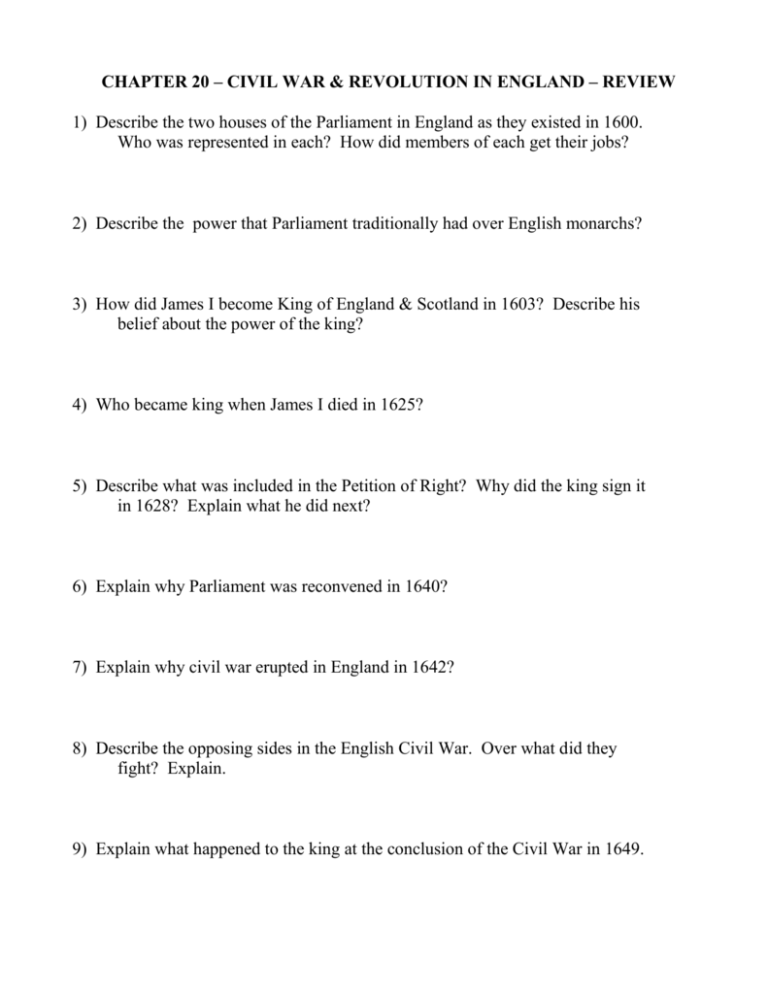
CHAPTER 20 – CIVIL WAR & REVOLUTION IN ENGLAND – REVIEW 1) Describe the two houses of the Parliament in England as they existed in 1600. Who was represented in each? How did members of each get their jobs? 2) Describe the power that Parliament traditionally had over English monarchs? 3) How did James I become King of England & Scotland in 1603? Describe his belief about the power of the king? 4) Who became king when James I died in 1625? 5) Describe what was included in the Petition of Right? Why did the king sign it in 1628? Explain what he did next? 6) Explain why Parliament was reconvened in 1640? 7) Explain why civil war erupted in England in 1642? 8) Describe the opposing sides in the English Civil War. Over what did they fight? Explain. 9) Explain what happened to the king at the conclusion of the Civil War in 1649. 10) Describe the government created in England immediately after the Civil War? What was it called and who was in charge of it? 11) Explain why the House of Commons was dismissed in 1653? Who claimed total power? Under what title? 12) Explain why the limited monarchy was restored in 1660? Who was asked to become king? 13) Who became king in 1685? Explain why he was not popular? Explain what happened to him? 14) Who was invited to take the throne in 1688? Explain why they were asked to sign the English Bill of Rights? 15) List four limitations on the power of the monarch included in the English Bill of Rights. 16) Explain the principle about government that was firmly established as a result of the revolutions that took place in England in the 1600s (Hint: think John Locke). 17) Show how the following English monarchs were related to one another: Henry VIII, Elizabeth I, James I, Charles I , Charles II, James II, William & Mary
